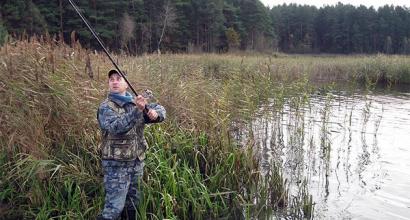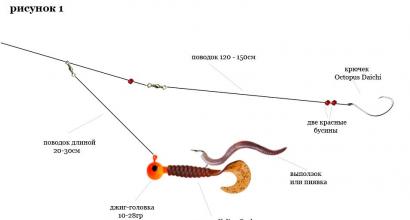The best wobblers for zander
Wobblers do not have an exact classification. Depending on the place of fishing, certain wobblers for zander are chosen.
There are such characteristics of the bait for pike perch:
- Body shape. Simulates a food object. There are no specific forms of living creatures here. Pike perch willingly takes those baits that copy the bait that is not inherent in our reservoirs, for example, long minnows. An individual feature can be incorporated in the design of the spinner. For example, an imitation of a wounded fish, an enlarged tummy, a steeply broken ridge.
- The degree of buoyancy. There are sinking, floating and suspenders (floating in the water column). On the shallows, a suspender (they have neutral buoyancy) and floating baits give a good result. In crooked places, only a floating wobbler is used. At depth, sinking baits are used.
- Deepening. This parameter depends on the blade. The larger the blade and the farther the cast, the more the wobbler will go deeper during wiring. There are two numbers on the packaging of spinners. The first indicates the depth of the cast, and the second - trolling.
- Oscillation frequency. In addition to the shape of the wobbler itself, the shape and location of the blade affects the oscillation frequency. The wider the blade, the stronger it will throw the bait to the sides during wiring. Narrow blades have less effect on the course of the bait and it will not be thrown to the sides so much. Pike perch loves high frequency lures.
- Color. It is necessary to choose those colors that are inherent in the fish of this reservoir. This rule is always valid, even at night. More often they choose silver or the color of perch.
- Noise chamber. It is difficult to say here what pike perch will like on a given day. In the same place, he can better take a quiet or noisy wobbler on different days.
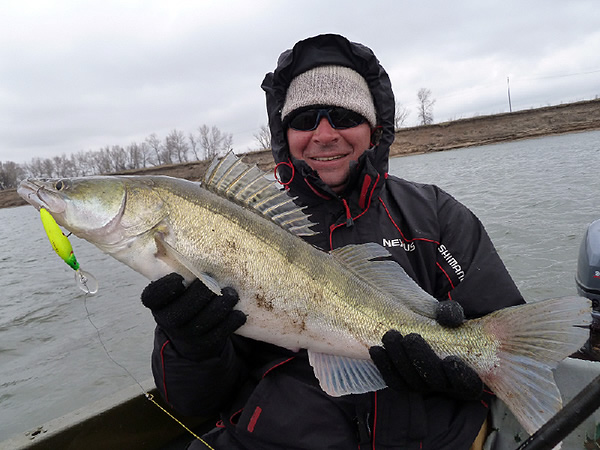
Spro Big Eye Minnow up to 90mm long. Uniform or twitching wiring is used at 0.5-1 m depth. The wobbler itself is of medium gaming surfacing. There is a similar wobbler - Damiki Striker. Good casting and twitching at the same depths. Daiwa TD Shiner 1062SP. Used at depths of 6 m against large individuals. Greedy-Guts from PONTOON 21. In fact, there is no alternative for night fishing among wobblers.
It has excellent acoustic, dynamic and flight characteristics.
Halco Combat has a relief surface and makes noise and plays during trolling and twitching fishing. Dives to 2.5 m.
Hils Master Haka. Suspender 70 mm long, which is used at depths of 5 m.
Wobblers are indispensable near the cliffs
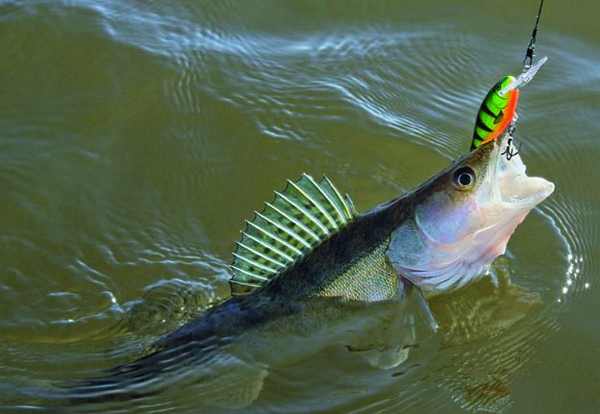
Jackall Soul Shad 52 SP or 65. Trolling Suspender 52mm long for fishing predators up to 1.5m deep. For 65 mm - 2 m depth.
LIVETARGET Threadfin Shad Baitball Crankbait. Simulates a flock of 3 fish. One of the best!
Rapala Barra Magnum. More often takes a large predator when the wobbler hits the bottom of the reservoir at a depth of 6 m. Salmo Hornet. Does not require experience from the fisherman when posting. Models of 40-70 mm play sweepingly at a depth of up to 4 m. Universal, convenient for trolling under any conditions.
Strike Pro EG-068. The features of this wobbler include the fact that it is most effective to catch with jerky wiring at a depth of 1.5-2.5 m. When trolling - 3 m. Choose a size of 85 mm.
Yo-Zuri L-minnow 44. Classic. The predator pecks both near the shore and when casting at a distance of 30-35 m. The predator does not disdain the bait at night either.
Catching time
When catching pike perch on wobblers in the pits during the day and in the shallows at night, you can use baubles with a depth of one meter into the balls of water. In the morning, pike perch takes at deep brows and in front of riverbed tables. Before lunch and until 15-00 can take in different places periodically. From evening until dark, pike perch is at a depth, sometimes going to the surface for small fish.
Around midnight, pike perch lurk in the depths or in the middle of the bay, behind the rifts on rocky ridges. Until cocksong (04-00 hours) it hunts in shallow water, shallow areas near the coast. In the rivers, pike perch is more active, but in the heat, activity drops right up to the onset of autumn.
Wobblers for trolling for zander
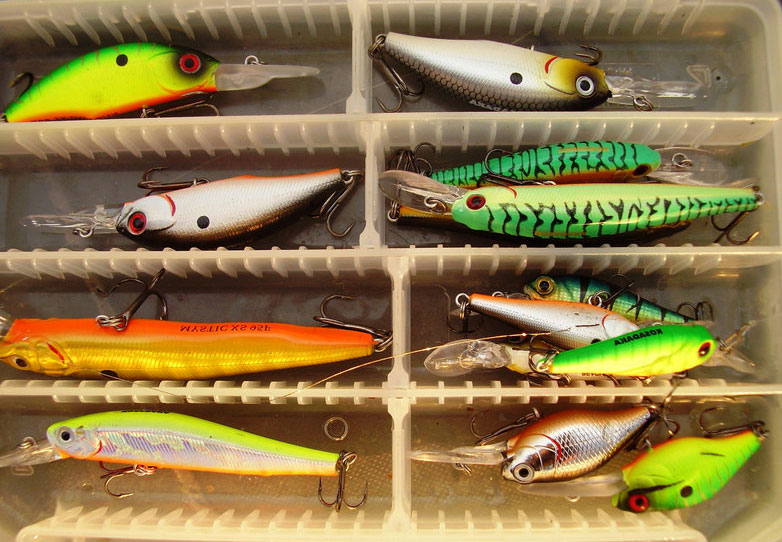
Although the basic models of the Rapala company are the most suitable for zander fishing, it is not necessary to exclude Chinese wobblers or other eminent manufacturers from the arsenal of “home-made” ones.
Wobblers for trolling
Pontoon 21 Deeprey - deep-sea.
Halco Sorcerer 125 and Hali Hippo - used in shallow waters.
Jackall Soul Shad 52SP. Universal suspender. Use up to 1.5 m depth.
Rapala Deep Tail Dancer Bomber BD7F. Does not make hooks for the grass and goes through shallow water places. In its design it has a rattle. One of the best models of deep baits. Models in 90 mm and 105 mm are submerged when trolling at 4-6 m, and 110 mm already at 9 m.
Rapala Shad Rap SR07. These catchy baits for zander are 70 mm long and weigh 8 g. They are used at a depth of up to 3 meters. Works in any conditions.
Yo-Zuri 3D Crank. It has a length of 65 mm and a weight of 17 g. A beautiful holographic color is protected by plastic and is clearly visible at a great depth of 5-6 m. At a low speed, it will give results at a depth of 4 m. Gives a high-frequency and stable game.
Yo-Zuri Duel Hardcore Shad SH 50 SP. The best wobblers for trolling, moreover, they are universal (from 1.2 to 2.4 m) in depth. There are floating and suspender versions. This model has held the leadership in the world in sales for more than one year. But the fisherman will not buy a failed model. More often takes pike perch weighing 0.5-2 kg.
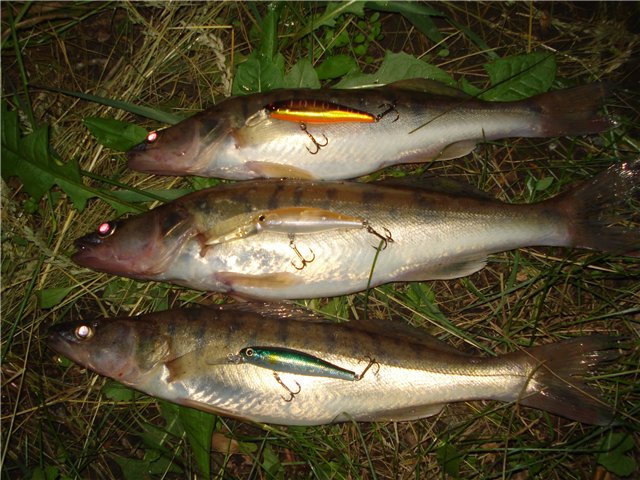
Yo-Zuri Cristal Minnow DD. Lure length 110 mm. Keeps a stable game even if the fisherman makes mistakes or goes into shallow water. When trolling, deep diving wobblers are used. Such spinners have a long longitudinal blade. The wobbler must play at any speed of wiring at a given depth.
Trolling pike perch allows the bait to move a little deeper, shallower than indicated in the parameters on the packaging of the spinner. This is approximately ±0.5 m of range. It all depends on the speed of rotation of the coil and the buoyancy of the wobbler. The slower the rpm, the higher the light bait goes. For sinking baits, on the contrary, the slower, the more the bait sinks. It is more successful to use spinners with an immersion depth of 2-2.5 m.
The flow rate also has an effect. For example, a floating light wobbler will swim higher with the current, and dive harder against it.
With any style of zander fishing, you need to pay attention, using a leash worsens the catchability of the bait by 30 - 40%. It is better to tie a floating or slightly deepening wobbler to the fishing line with a Rappal knot-loop.
Diving models with a winding ring are tied so that the knot does not slip at the point of attachment to the ring.
The current also entails a change in the game of the wobbler. Pike perch will be better in the current.
Wiring Options
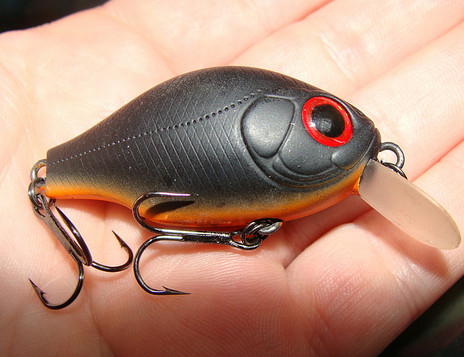
- The wobbler is evenly carried out at a depth of 1.5-2 m. This style gives a good result in shallow water. If the pike perch is at a depth of 3 m, then the bait is loaded additionally.
- The alternation of calm uniform winding is repeated with an acceleration of coil revolutions at a depth of 1.5-2 m.
- The bait is carried out from the surface of 0.5-1 m, allowing the wobbler to periodically emerge and swim on the surface of the water. After that, the spinner is again lowered by wiring to a depth.
- They begin wiring gradually in the water column, and then reducing the speed allow the wobbler to rise to the very surface. After that, the spinning player raises the rod as high as possible and at the same moment melts to full height.
- The bait is forced to sharply touch the bottom blade. Then they stop winding the fishing line, waiting for the bait to emerge and again deepen, to the bottom of the wobbler. Such wiring at the bottom does not give much effect. Pike perch does not have time to grab the bait, but such wiring makes the predator budge. After that, they begin to catch zander with other wiring options. Such wiring can also be a stepped jig, when they make just a couple of turns of the coil and let the bait touch the bottom again. That is, wiring with rare jerks. Or they use a twitching style (wiring in jerks). With such wiring, slowly sinking models are used.
- After casting, the bait is expected to be completely submerged. Wiring starts at a distance of 0.5-1.5 m. They lead the lure slowly at a constant speed. Several casts are made in one place.
- Wobbler periodic wiring. This style of fishing is suitable for suspenders. They hang at the moment of pauses in the water column. The predator reacts to such baits when active wiring does not work.
They complete any wiring by lowering the spinning rod into the water up to the reel itself.
Chinese wobblers
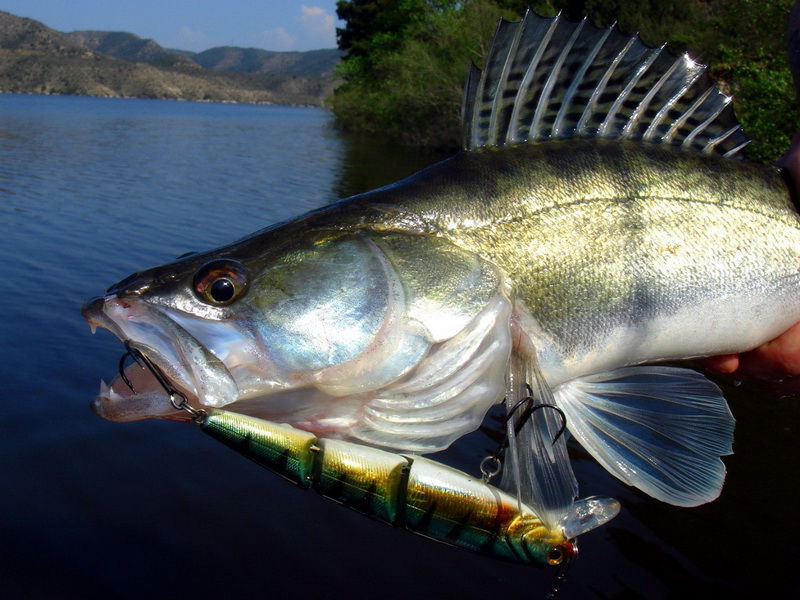
Although they are inferior to eminent brothers, you don’t need to disdain them, so with a significant difference in price, Chinese wobblers are not so much inferior in catchability. For example, a nameless two-piece length of 130 mm gives a good result, both on pike perch and on another predator.
The main thing when buying is to carefully inspect the wobbler. There is a lot of marriage in the design, or the wobbler itself is not balanced, as a result - an unsuccessful game, but rather a wrong one. You can buy two visually identical Chinese wobblers and at the same time get a different game from them.
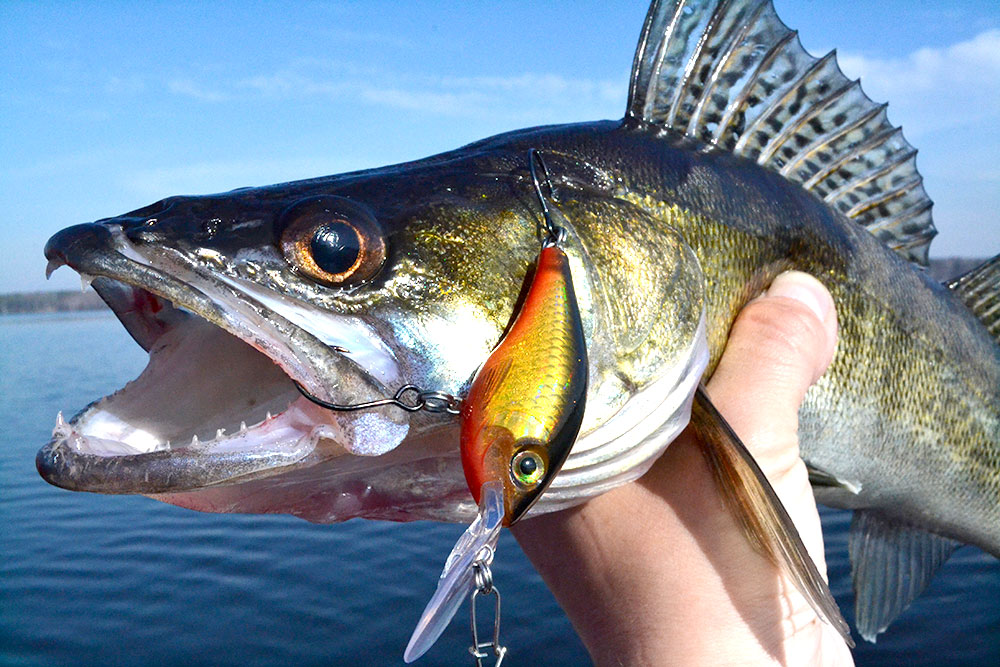
When choosing, be guided by wobblers with 3D imitation of fish, this is when the relief of the wobbler, and not just the coloring, imitates the eyes, fins and other parts of the body of the bait. It often happens that an unusual shape gives a high frequency with a small amplitude when playing with a lure.
A good wobbler Tianxi Float 86 or famous brothers from Rapala.
Chinese catchy wobblers Antego and Tianxi give a good result in comparison with brands. It happens that the best bite on them on some days.

